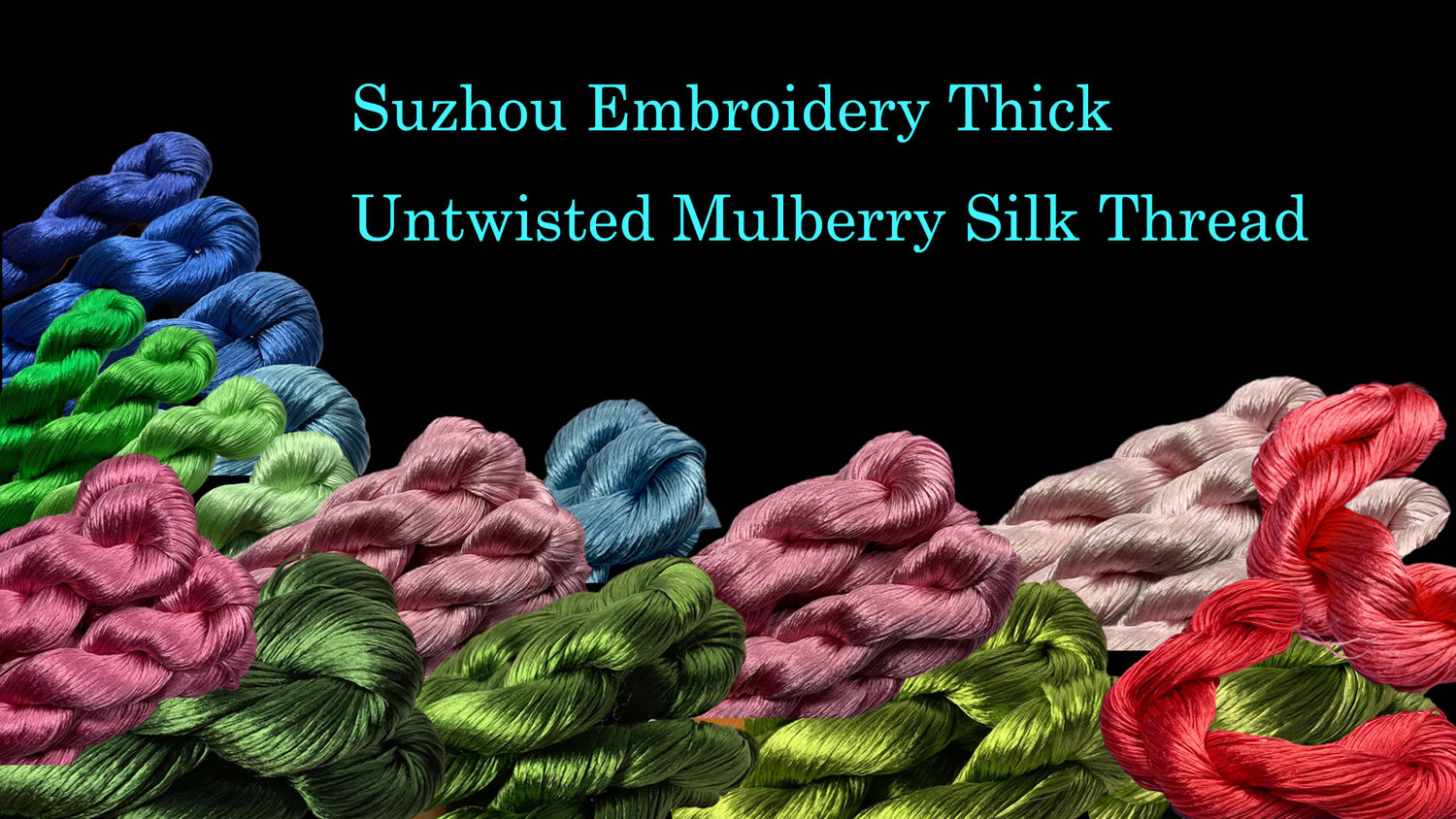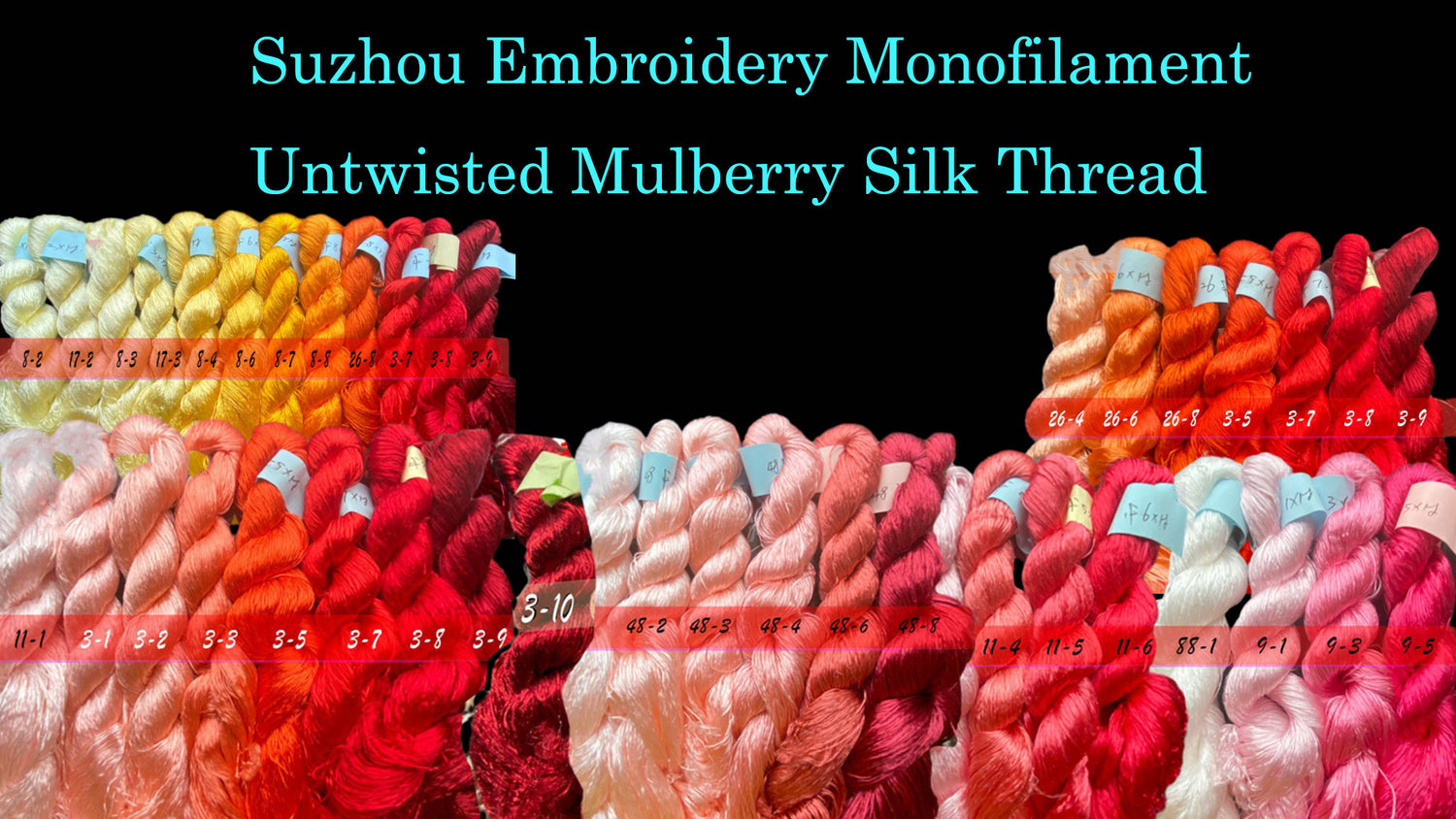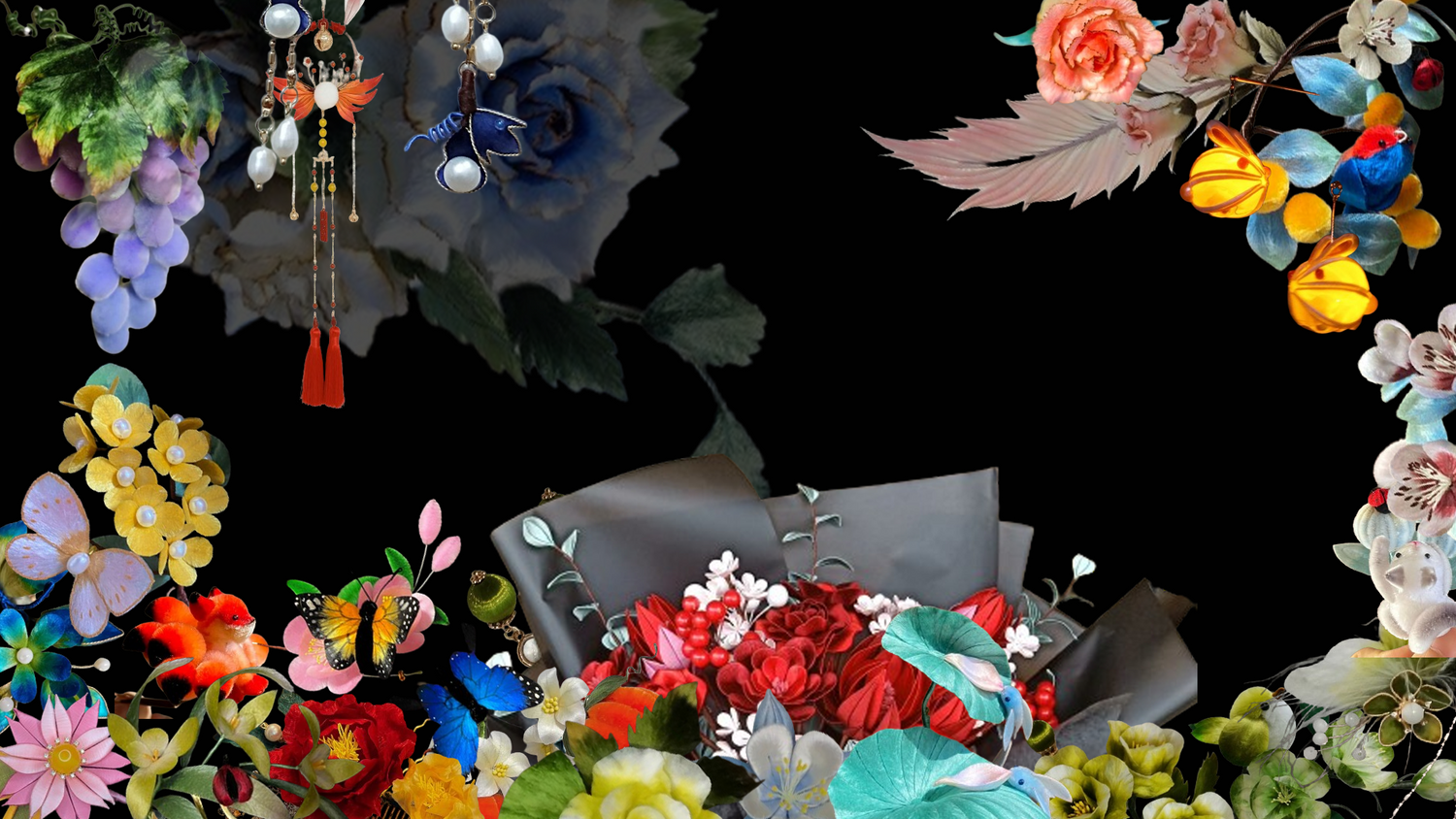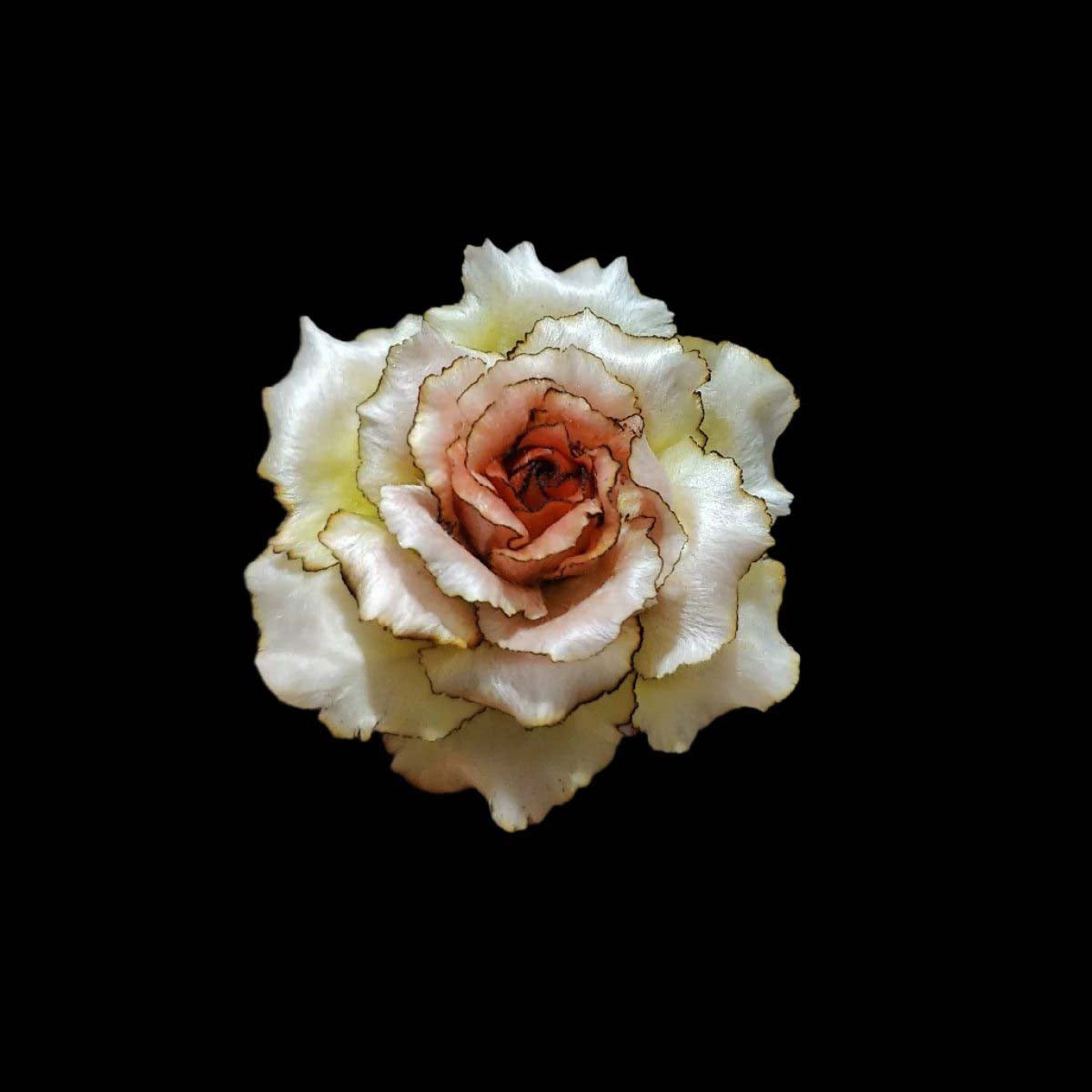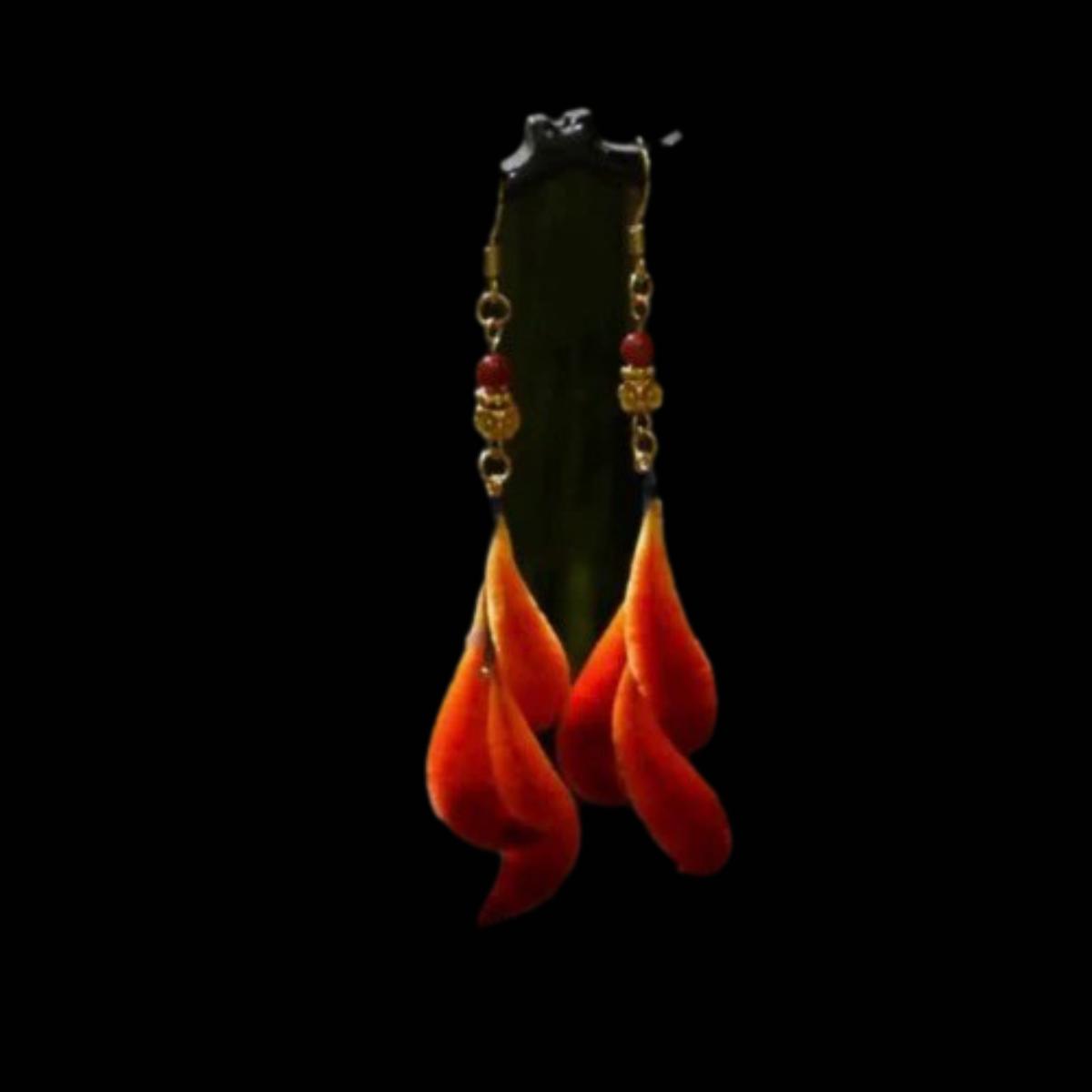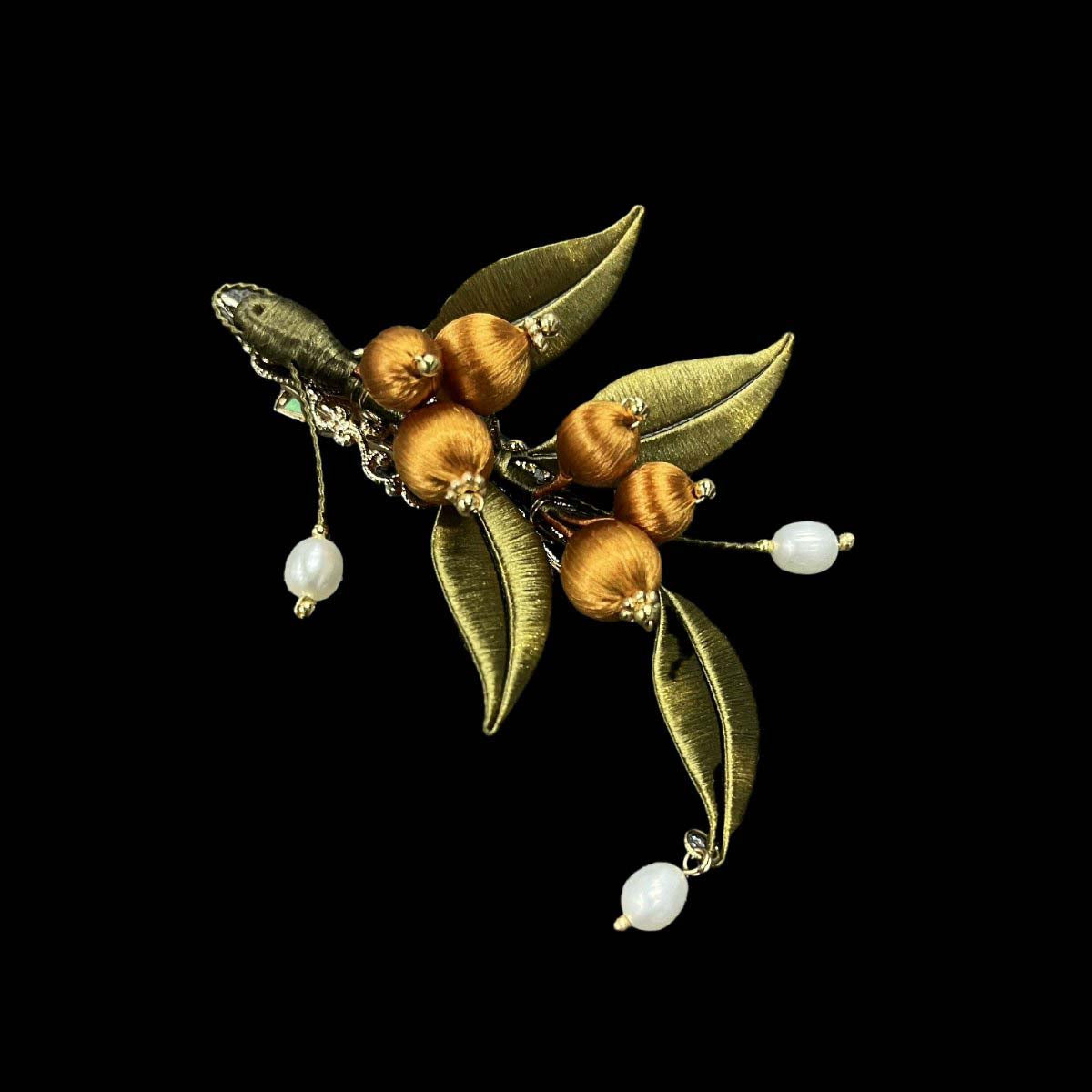
How to Make Fish - Handcraft Ronghua Tutorial
Share
In Chinese, the word for fish (鱼) is a homophone for "surplus" (余), symbolizing "yearly surplus" and "abundance and prosperity." This reflects people's desire for wealth and good fortune, symbolizing stability, celebration, and prosperity. People often use fish to express good wishes. Consequently, fish shapes and patterns are frequently used in traditional jewelry. In the art of Ronghua, the fish element is also a common theme. This case uses the fish as the creative element to design and produce a hairpin.
A. Making the Fish Tail
 1
1
1. Prepare velvet strips in corresponding colors based on the design effect.
 2
2
2. Since the fish tail is wide and irregular in shape, divide it into three parts. Trim the velvet strips to different lengths.First, prepare 10 velvet strips for one part of the tail. After cutting off the excess brass wire from the light-colored end of the strips, arrange them from center to edges, decreasing in height.
 3 4
3 4
3. After trimming the velvet strips for the fish tail, fix them together with silk thread to form a fan shape.
4. Use white glue to stick the velvet strips together and adjust the strip ends to the desired curvature. Repeat this process to make two more parts of the fish tail.
B. Making the Fish Fins
 5
5
5. Using the same method as for the fish tail, make two pectoral fins, two pelvic fins, and one dorsal fin.
C. Making the Fish Head
 6
6
6. Prepare four velvet strips of different lengths and fix their ends together with silk thread in order from longest to shortest. The varying lengths will create a curve when tied together.
 7 8
7 8
7. Use tweezers to adjust the shape of the component, then gather and tie the ends of the brass wire, forming a parachute-like shape.
8. Prepare another identical "parachute" component and assemble them together as shown to form the framework of the fish head.
 9
9
9. Using the same velvet strips as for the fish tail and fins, make a petal-shaped component and fix it onto the fish head framework. This completes the fish head.
D. Making the Fish Scales
 10 11
10 11
10. Prepare several small blue velvet strips and shape them into plump water drops as the base components for the fish scales.
11. Arrange four base components in the pattern of fish scales to determine the positional relationship of the components in the final product.
 12
12
12. Start assembling the base components of the fish scales. Take a brass wire and wrap it with silk thread. After wrapping a certain distance, add the four fish scale base components one by one in the predetermined positions to form a strip of fish scales.
 13
13
13. Make another strip of fish scales. After completion, combine the two strips to check the arrangement of the scales. Once confirmed, make several more fish scale strips for later use.
E. Assembly
 14
14
14. After making all the fish components, start assembling. First, fix the fish tail with silk thread, paying attention to the overall shape of the tail. Then, fill in some base components in the gaps at the bottom of the tail.
 15
15
15. Fix the dorsal fin and fish scale components, ensuring the positional distribution of the dorsal fin and scales. Fix the scales in an overlapping manner.
 16
16
16. Continue to fix the pectoral and pelvic fins, and bind the brass wires at the back. Leave the brass wires for the pectoral and pelvic fins longer for later adjustment.
 17
17
17. After fixing the fins, attach the fish scale components one by one, then add the fish head.
 18
18
18. Use pliers to adjust the length of the fin brass wires, attach the main accessory component, and complete the assembly.
 19
19
19. Final product display.

